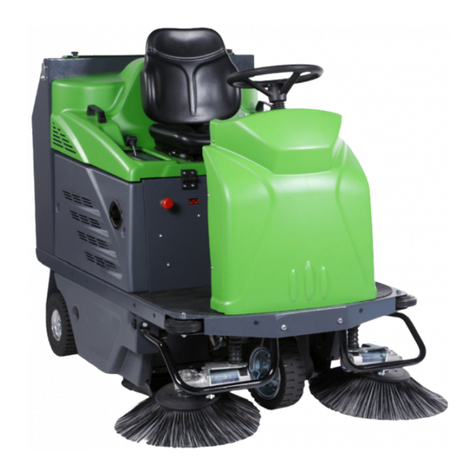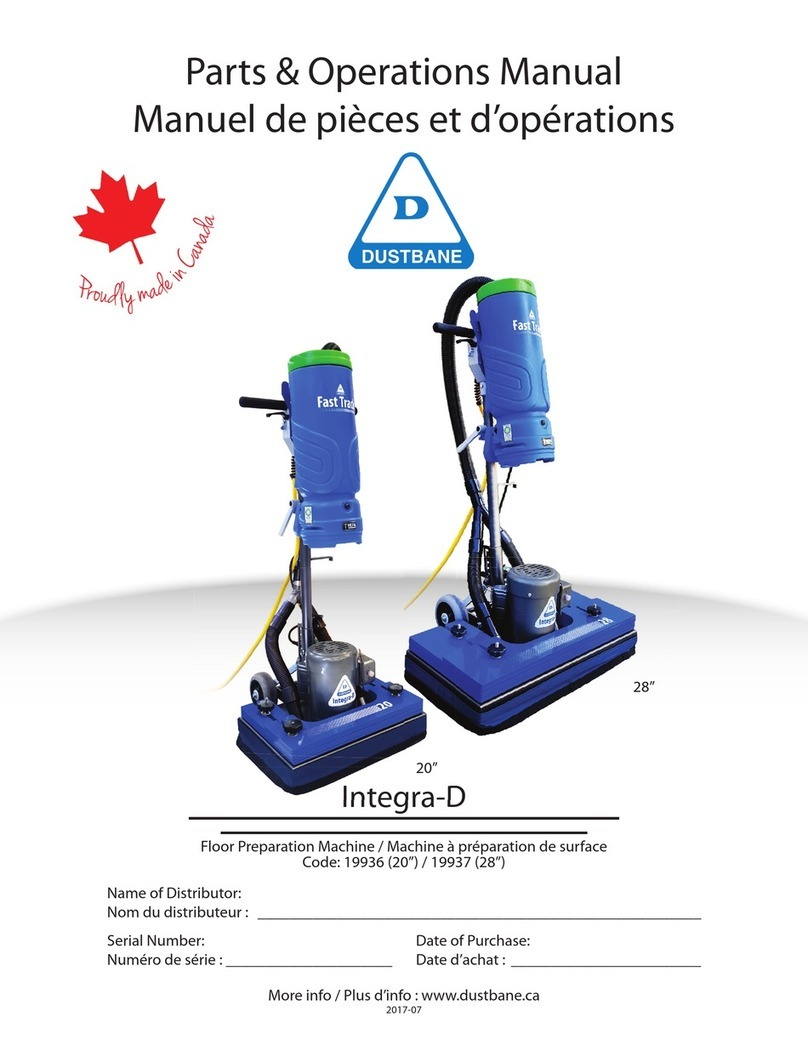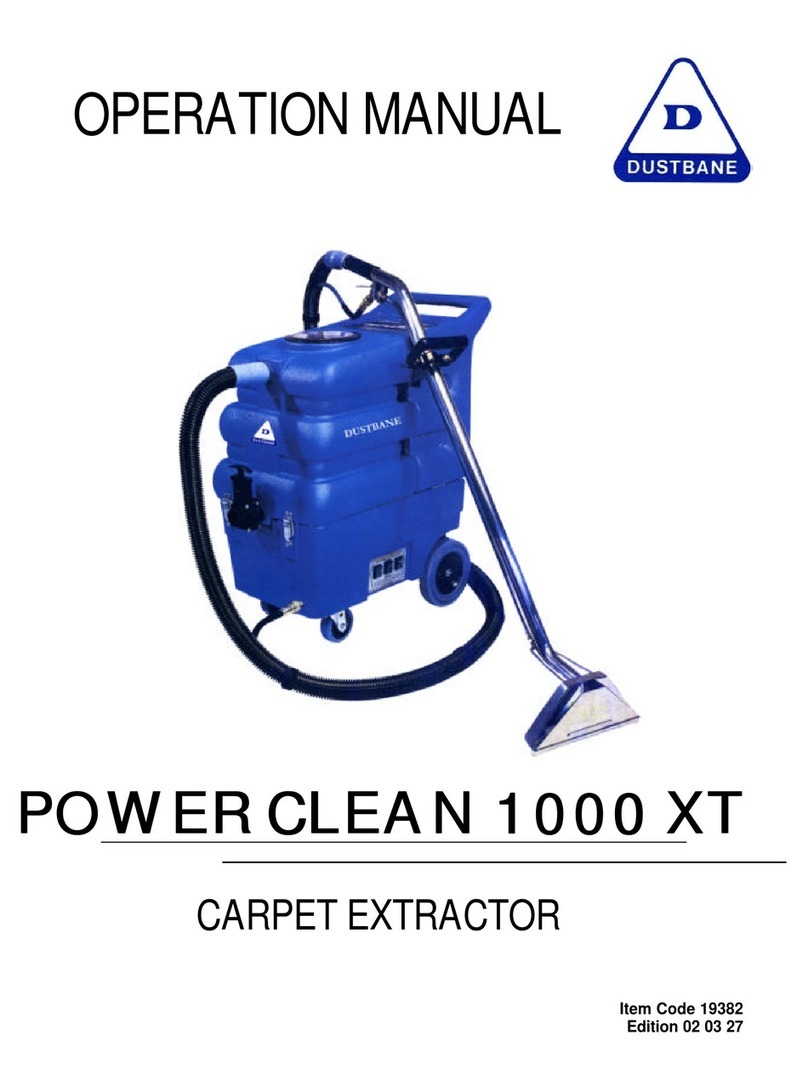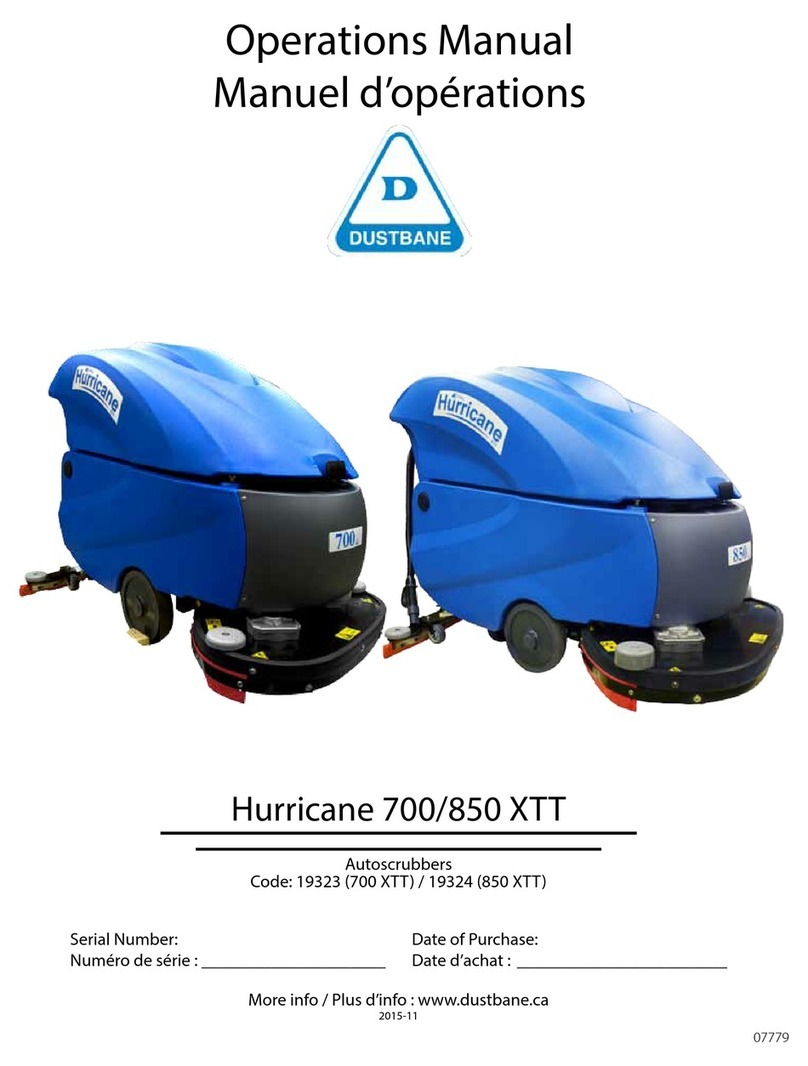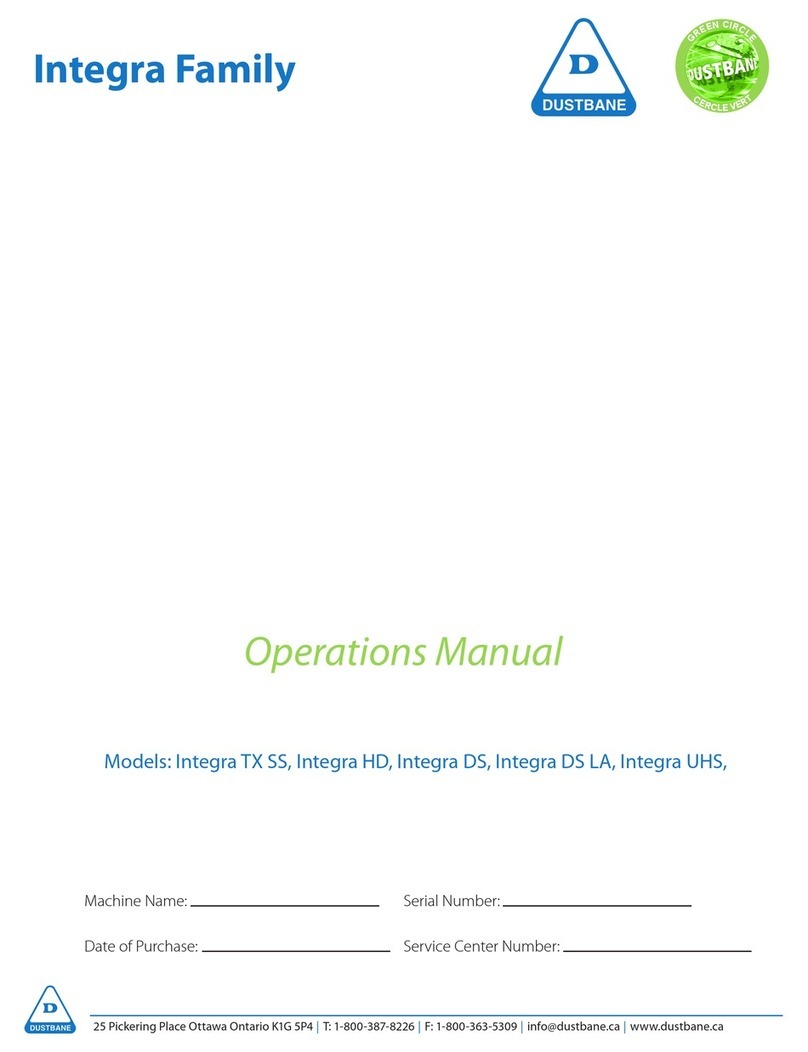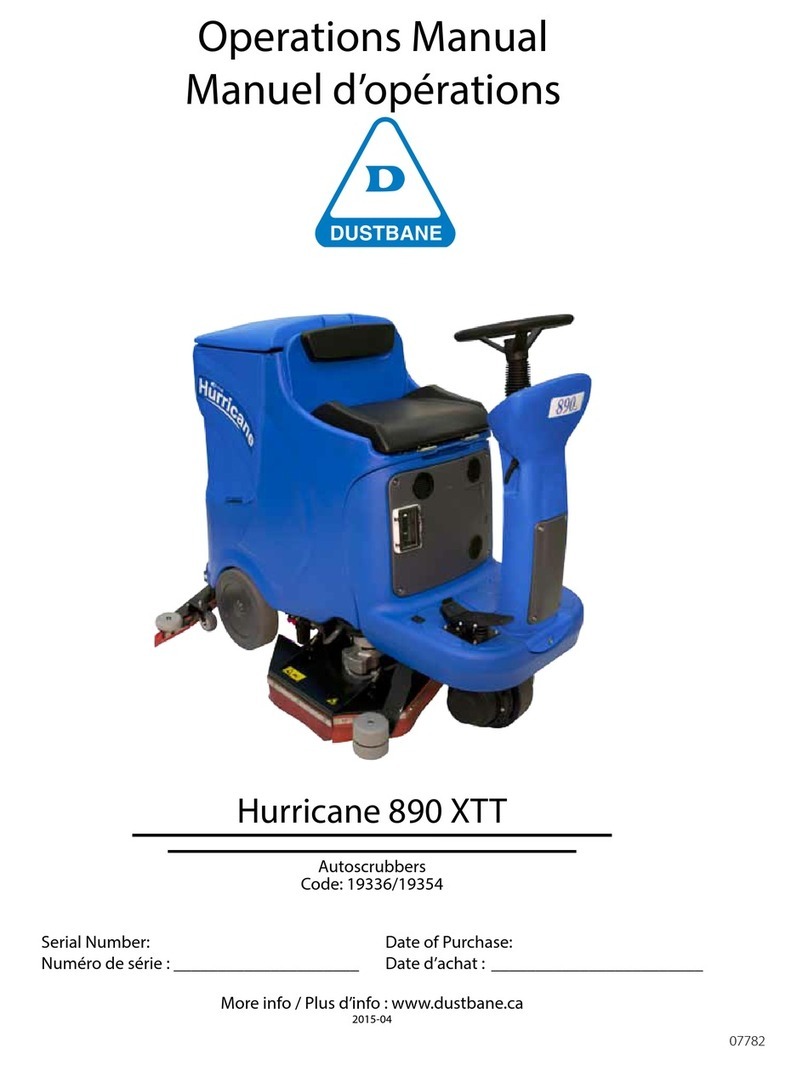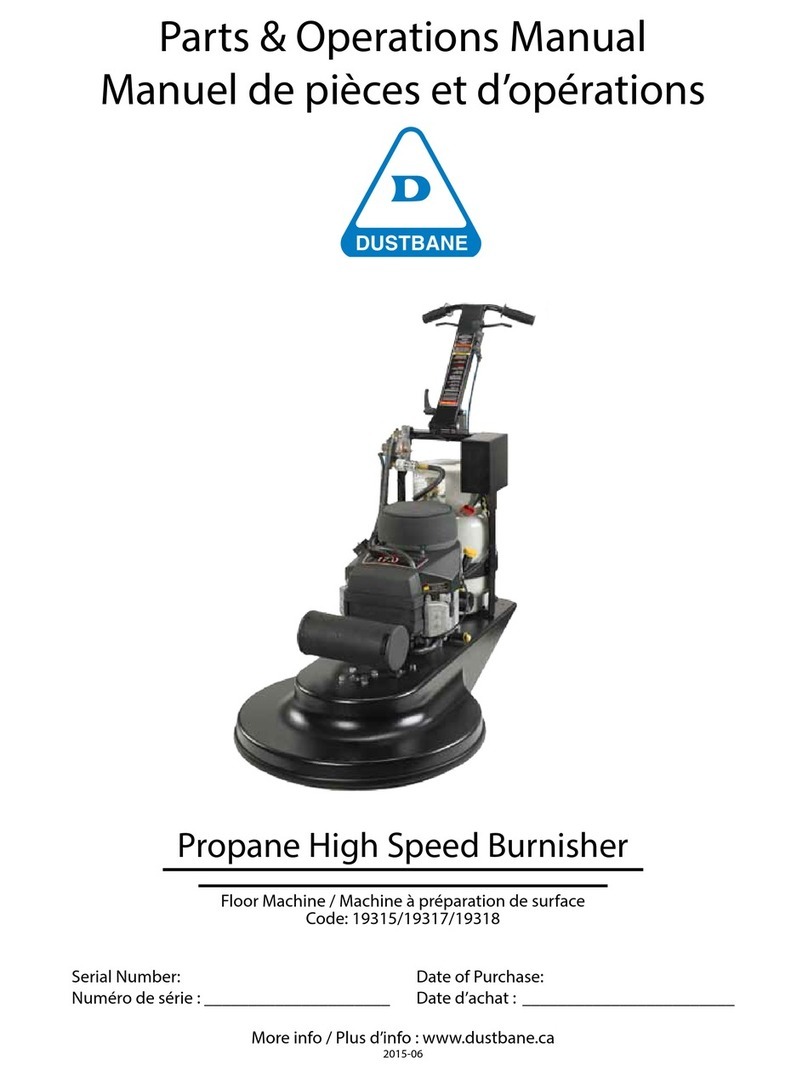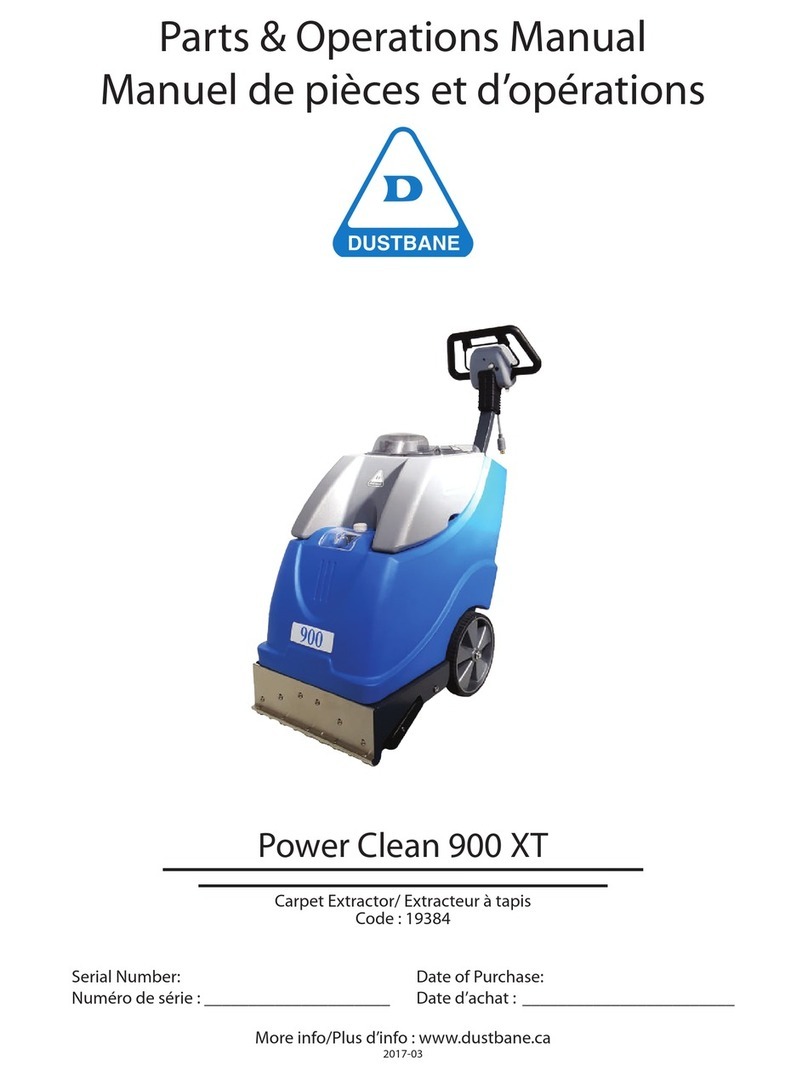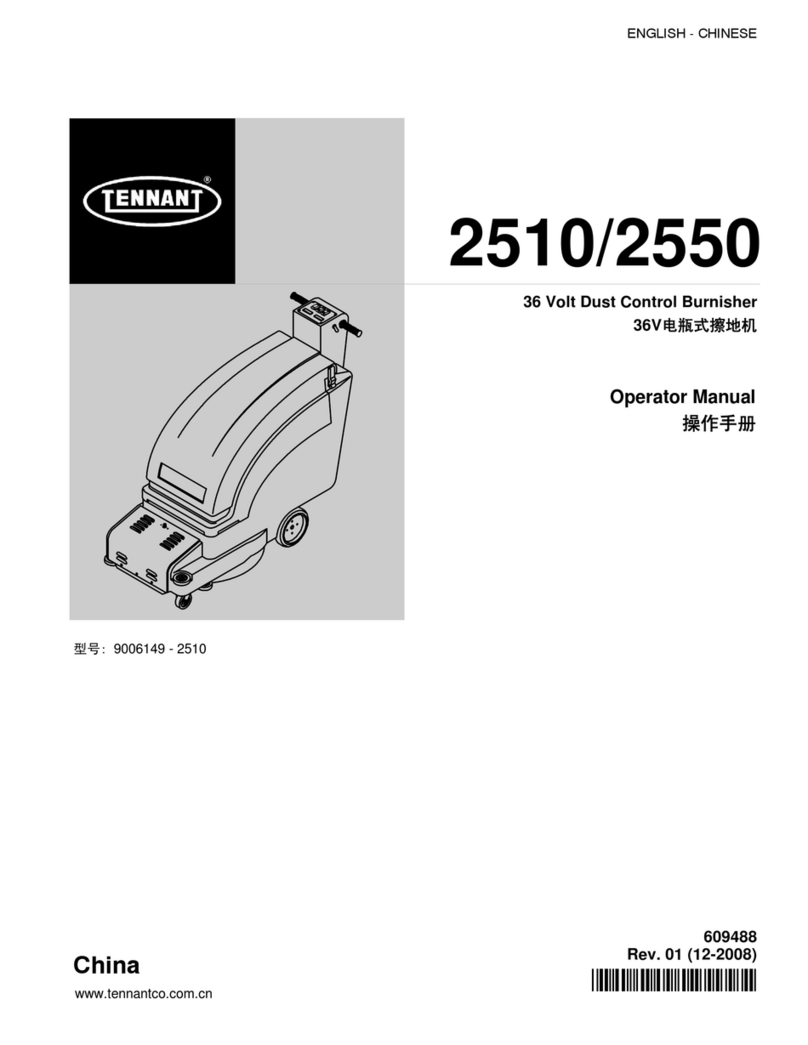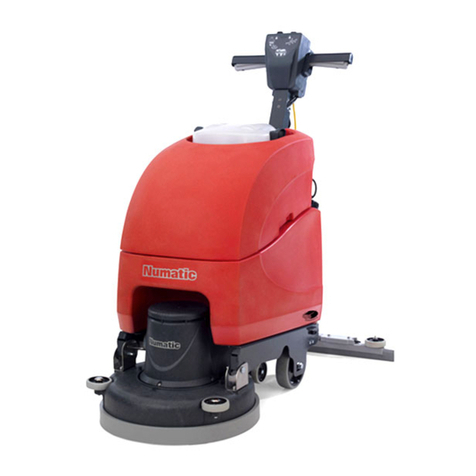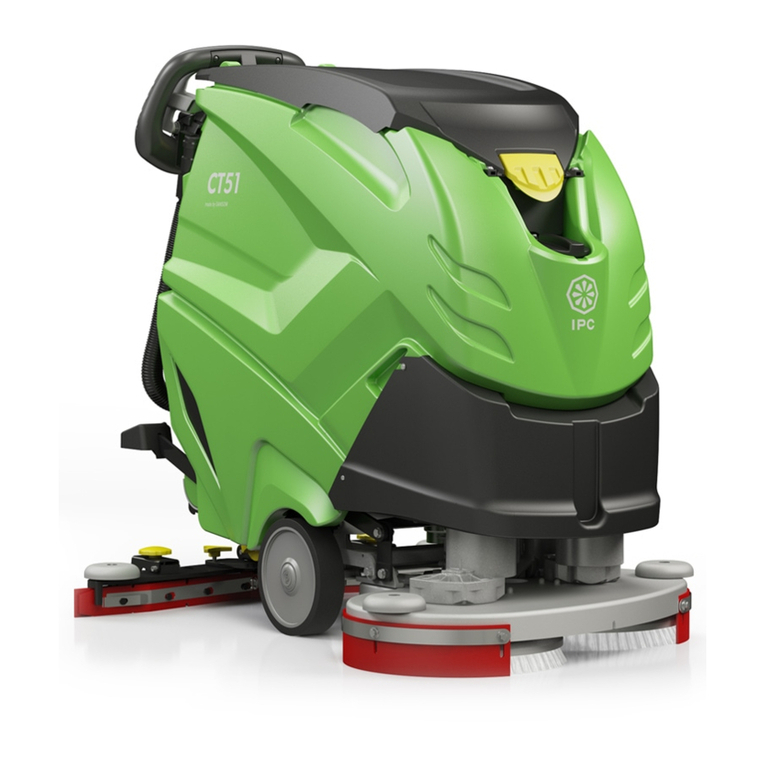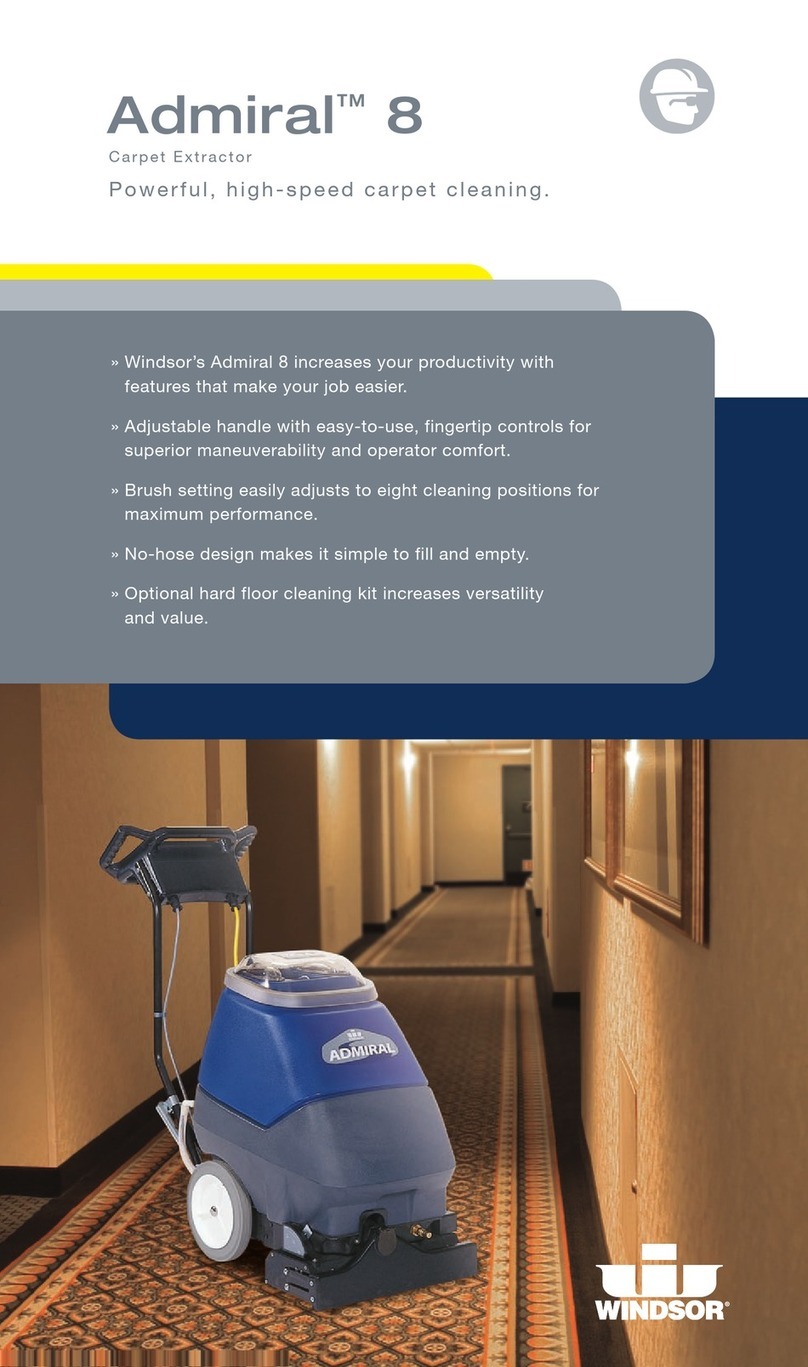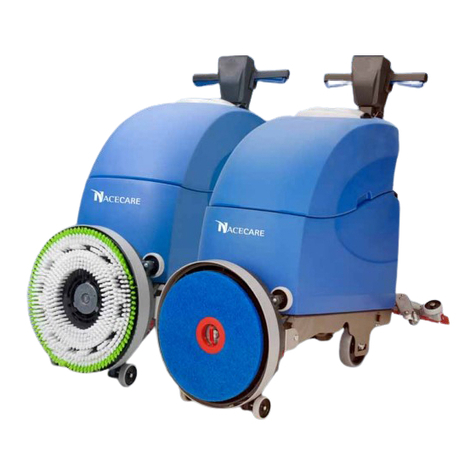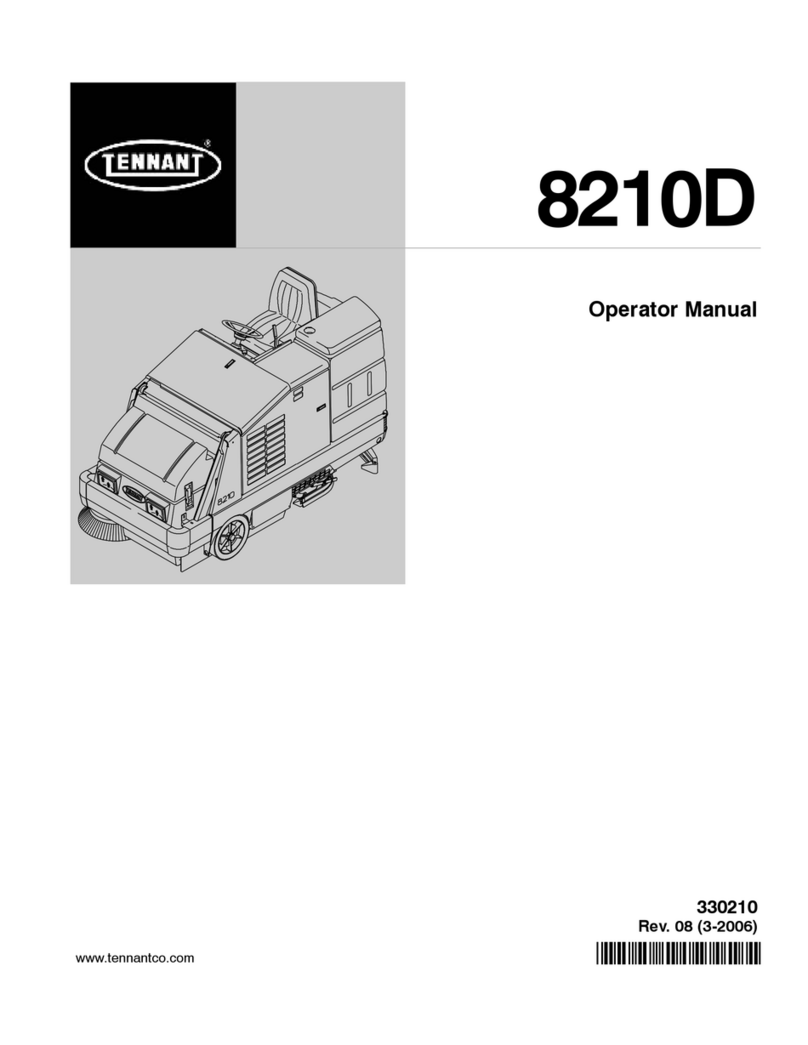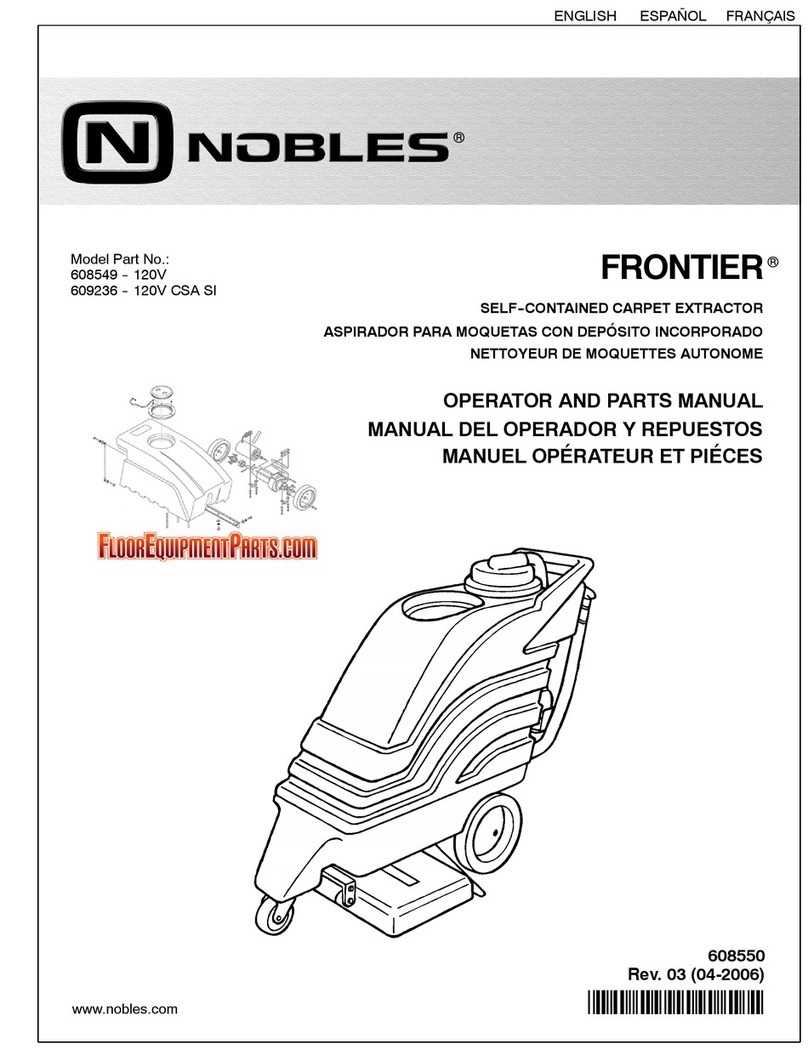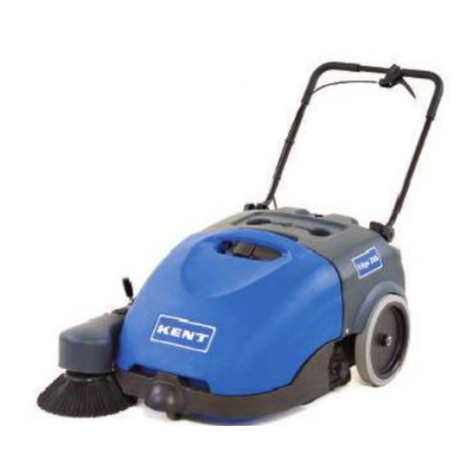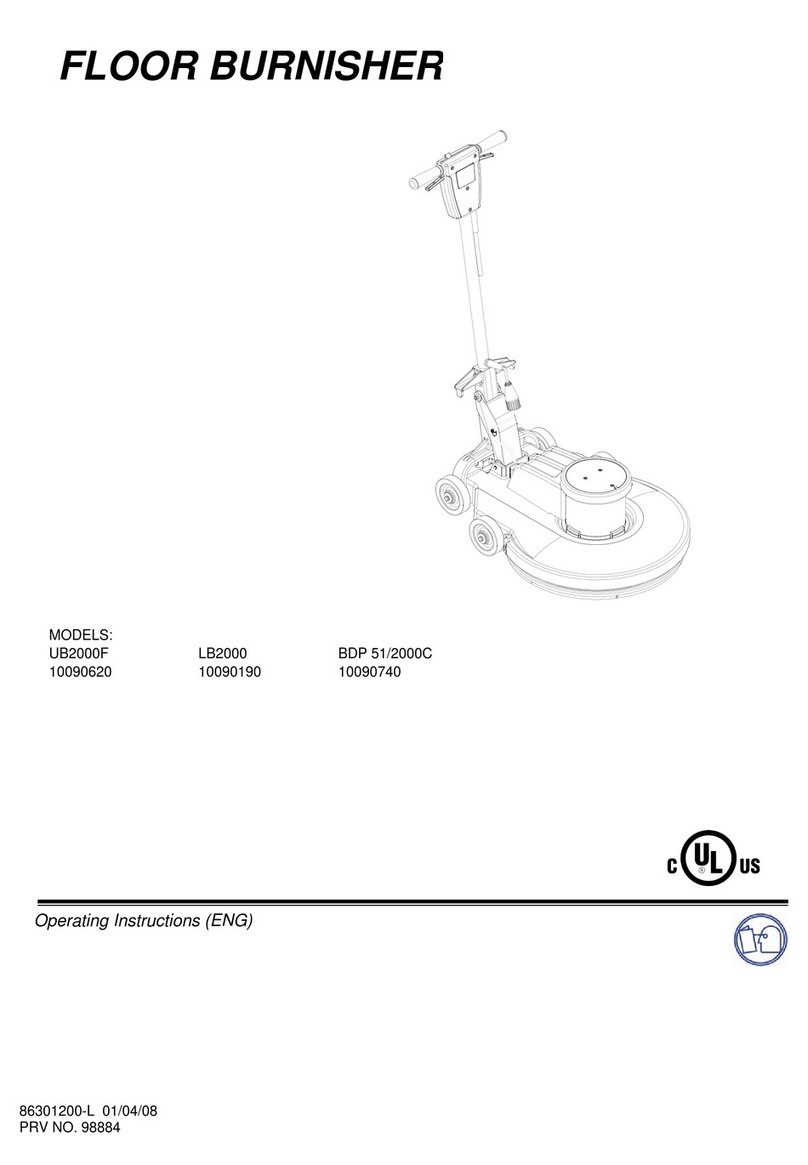
5
• Never use the machine to transport people or things or to tow things. Do not tow the machine.
• Never rest objects of any weight on the machine for any reason.
• Never obstruct ventilation and heat dispersion slits.
• Never remove, modify or circumvent safety devices.
• Numerous unpleasant experiences have shown that a wide range of personal objects may cause
serious accidents. Before beginning work, remove jewelry, watches, ties, etc.
• The operator must always use personal protection devices - protective apron or overalls, non-slip
waterproof shoes, rubber gloves, protective goggles and ear protectors and mask to protect the
respiratory tract.
• Keep hands away from moving parts.
• Never use detergents other than those specied. Follow the instructions on the MSDS if you come
into contact.
• Make sure the power sockets used for the models with battery charger are connected to a suitable
grounding system and protected by dierential thermal solenoid switches.
• Make sure the electrical characteristics of the machine (voltage, frequency, absorbed power) given
on the rating plate (g. 1) are the same as those of the main electricity supply. The machine with cable
has a three-wire cable and a three pin grounded plug for use in an appropriate grounded socket. The
ground wire is yellow and green. Never connect this wire to anything other than
the ground contact of the socket.
• It is crucial to respect the battery manufacturer’s instructions and current legislation.
The batteries should always be kept clean and dry to avoid surface leakage current. Protect
the batteries from impurities such as metal dust.
• Never rest tools on the batteries as this could cause short circuit and explosion.
• When using battery acid, always follow the relative safety instructions scrupulously.
• In the presence of particularly strong magnetic elds, assess the possible eect on the control
electronics.
• Never wash the machine with water jets.
• The uids collected contain detergent, disinfectant, water and organic and inorganic material.
They must be disposed o in accordance with local legislation.
• In the case of malfunction and/or faulty operation, turn the machine o immediately (disconnecting
it from the main power supply or batteries) and do not tamper. Contact a service center authorized
by the Manufacturer.
• All maintenance operations must be performed in an adequately lit place and only after
disconnecting the machine from the power supply.
• All work on the electrical system and all maintenance and repair operations other than those explicitly
described in this manual must be performed by specialized personnel expert in the sector only.
• If the power cable, plug or terminals require replacing, make sure the electrical connections and cable
grip inside the control panel are tightly fastened to guarantee the resistance of the cable if pulled.
Then replace the panel carefully to guarantee the safety of the operator.
• Only original accessories and spare parts supplied by the Manufacturer may be used in order
to guarantee safe problem-free operation of the machine. Never use parts removed from other
machines or from other kits.
• This machine has been designed and constructed to provide ten years’service from the fabrication
date shown on the rating plate (g. 1). After this time, whether the machine has been used or not,
it should be disposed of according to current legislation in the country in which it is used:
• At the end of the machine’s life, please dispose according to local regulations.
